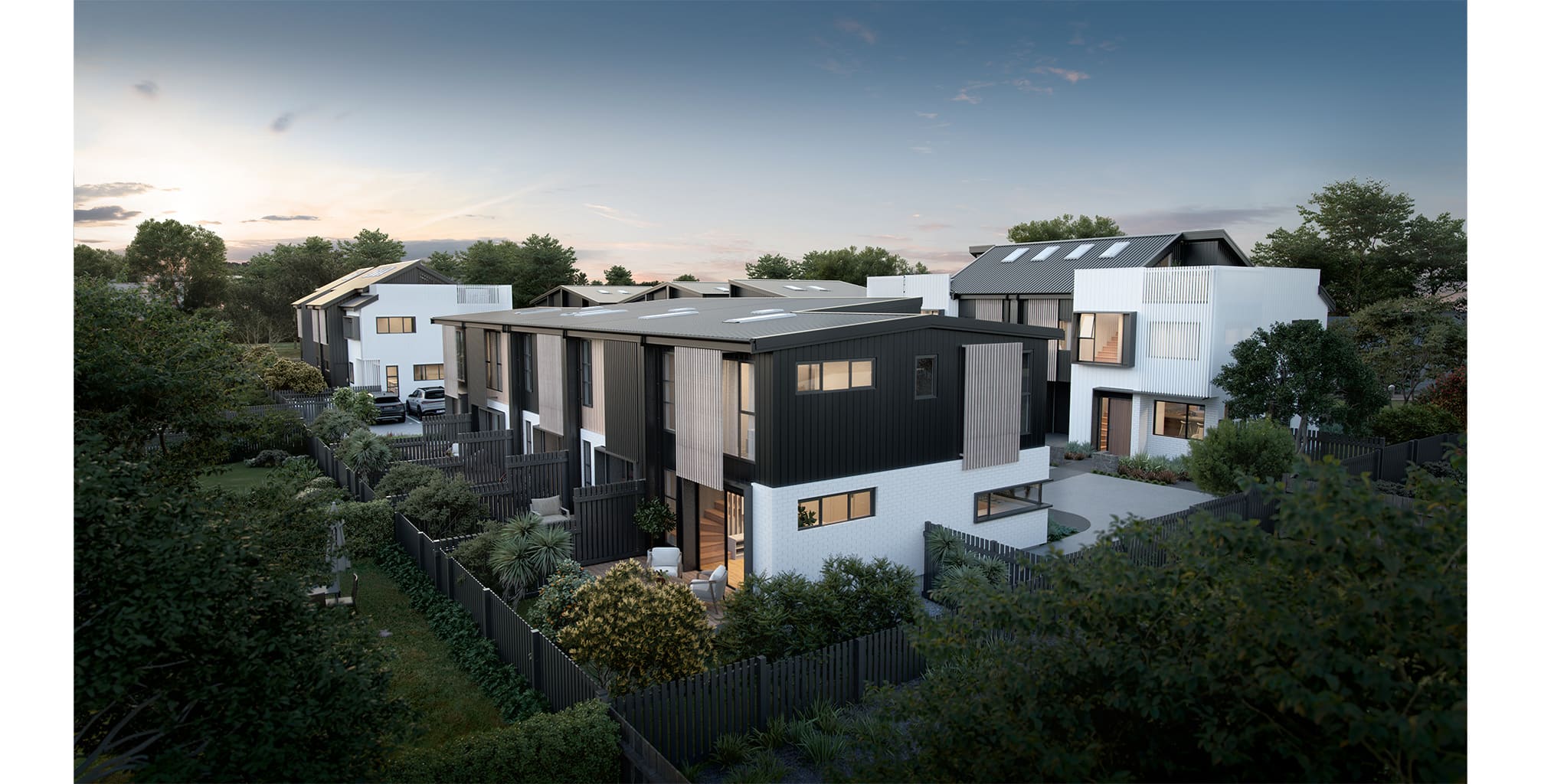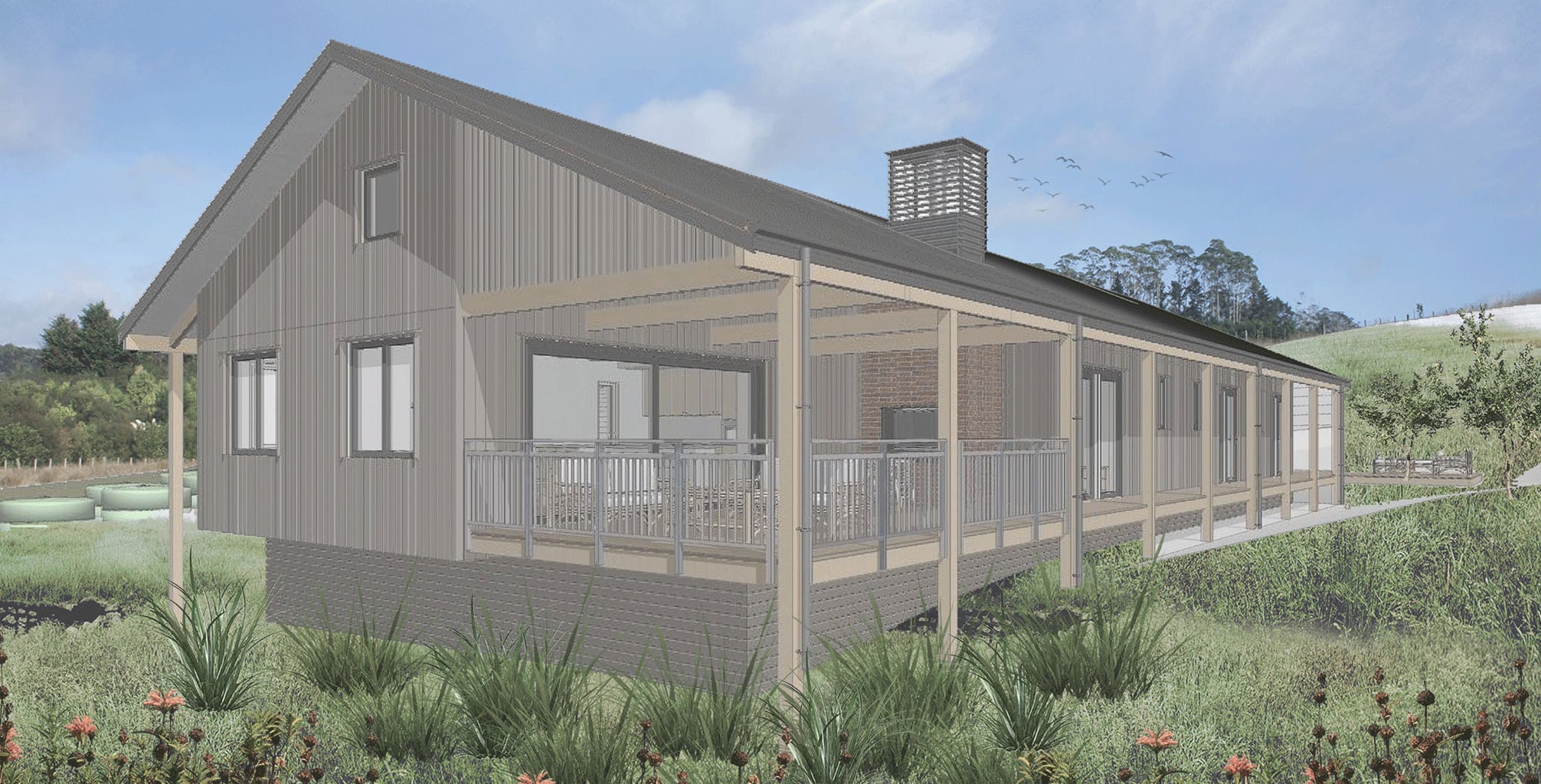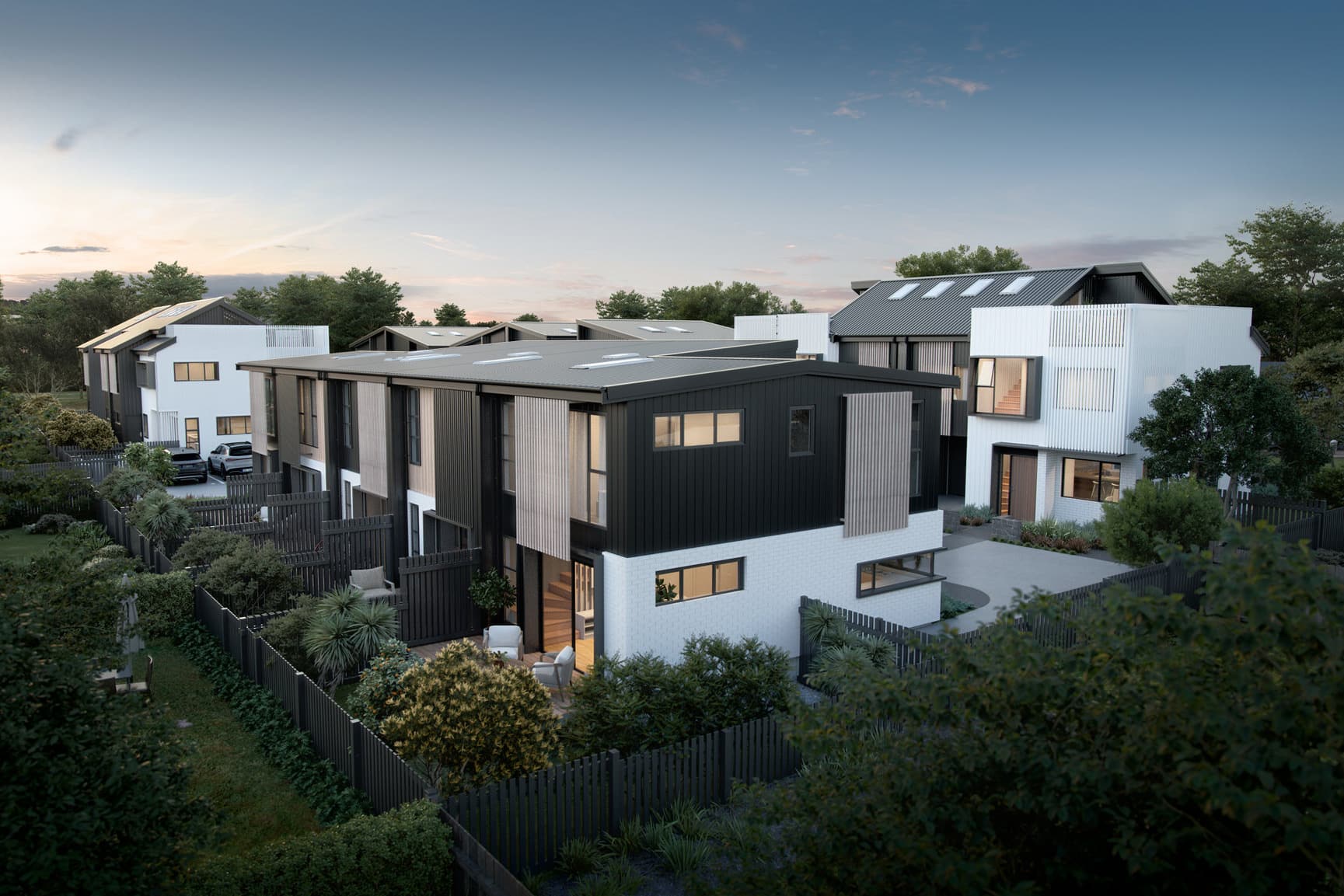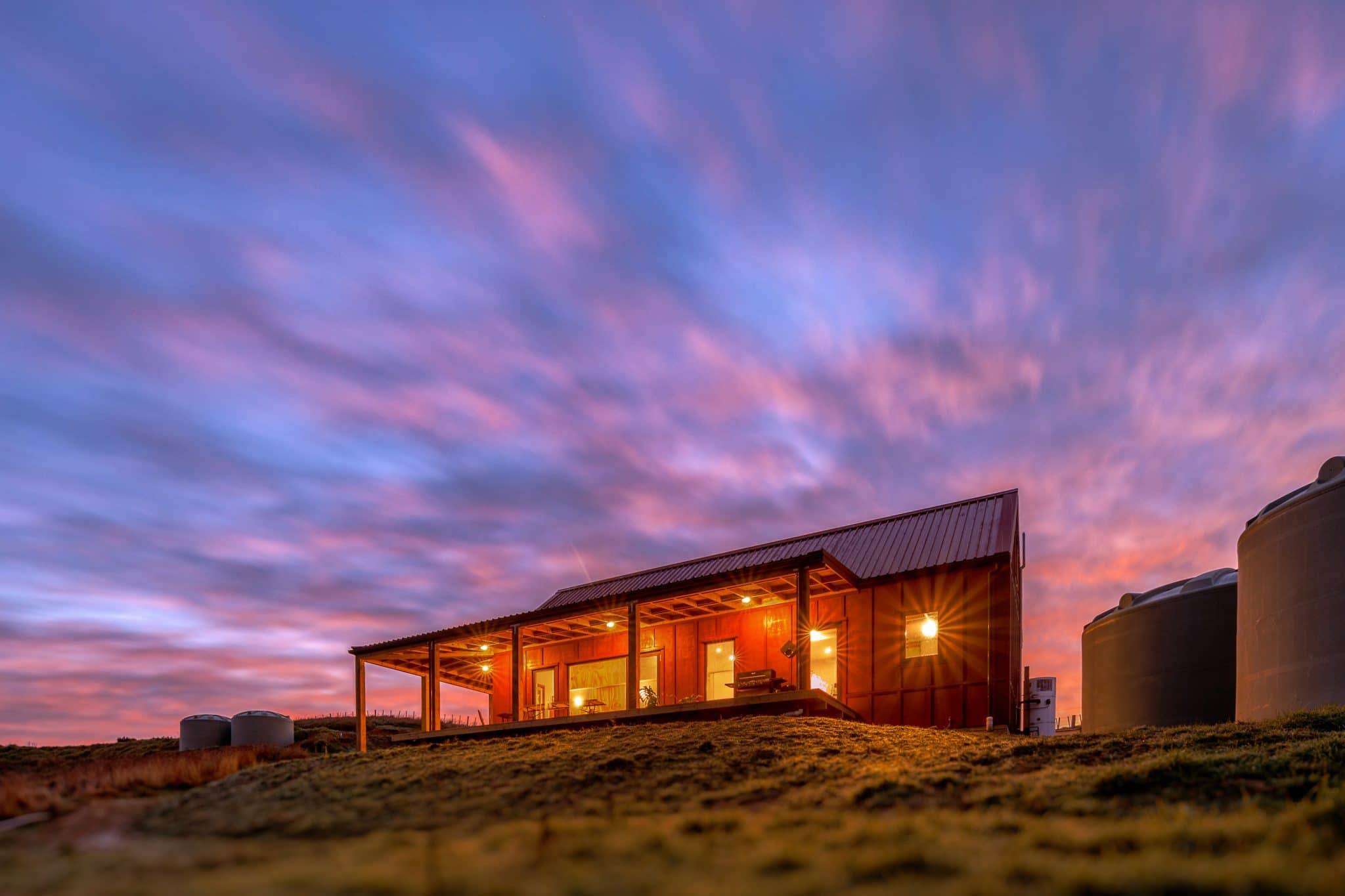Passive house
High performance, low energy buildings are warm, dry, healthy and cheap to run. Respond Architects can work with you to design your building to Passive House Certification, and other low energy certification standards.
Looking for a warmer, drier, healthier home or office that’s energy efficient with minimal heating bills? A Passive House Certified building could be the answer – designed, tested and proven to perform.
Respond Architects can work with you to design your building to Passive House Certification standards.
Passive House Certified buildings are specifically planned and rigorously tested to meet a defined set of criteria that ensures a healthy interior environment – using 75% less energy per m2 per year than the average New Zealand home and having a constant internal temperature of 20-22 degrees.
This is achieved by applying five basic principles: better insulation, high performance glazing, airtightness, mechanical ventilation with heat exchange and minimisation of thermal bridges (points where heat is transferred in or out).
Undergoing Passive House Certification is a way of proving your home or office will perform as designed, by modelling, checking and testing throughout the design and build process, then finally testing the completed building.
Although it’s the only way to prove your building will perform, the underlying design principles of Passive House can still be applied to create a high performance, low energy home. While it may not achieve Passive House Certification requirements, it will be far warmer, drier and energy efficient than a standard building.
PHPP Energy Modelling Services
Respond Architects also offers standalone PHPP energy modelling services for your existing property, or for your current concept design, working with you and your designer. Thermal modelling of your building can reveal how well it performs, or will perform, from an energy efficiency perspective, and highlight where any issues may be causing overheating, heat loss, and high energy bills.
Once modelled we can explore options to improve the thermal performance of your building envelope, prevent overheating and heat loss, and save you money – be it by increasing insulation, installing ventilation, adding exterior shading, or upgrading the specification of your exterior windows and doors.
Types of Passive House Certification:
Passive House Classic
Standard certification.
Passive House Plus
When the building produces the same amount of renewable energy as it uses each year.
Passive House Premium
When the building produces as much renewable energy as it and its occupants use in their daily lives.
EnerPHit
The standard for retrofitting existing buildings.
PHI Low Energy Building Standard
For projects that just miss out on full Passive House certification, while still proving they achieve high levels of energy efficiency. The criteria are slightly less but still ensure a high level of performance, making it more achievable for people that just want a ‘better’ building.
Frequently Asked Questions
Q. Is Passive House just for homes?
A. No. Supermarkets, schools, hospitals, offices, retail buildings, factories, sports halls and even swimming pools have been completed and certified to Passive House standard. It’s not for standalone buildings either. Many multi-residential developments have been constructed and certified, with the first one in New Zealand being constructed right now in Dunedin.
Almost any building, of any size, can be passive house certified. This means lower energy bills, less maintenance and far healthier interior environments.
Q. Is Passive House just for new buildings?
A. Not at all! The standard is nothing more than a way to certify the energy efficient credentials of any kind of building to ensure the interior comfort of the occupants, the energy efficiency of the building and an assurance of quality throughout.
The EnerPHit certification covers the retrofit of the Passive House standard into existing buildings. Energy savings of between 75-90% can be achieved in existing buildings by improving the insulation, reducing the thermal bridging, increasing the airtightness of the building envelope, upgrading the quality of the windows, adding mechanical ventilation and utilising renewable energy sources and heat generation.
Q. Can I open the windows in a Passive House building?
A. Of course you can! Passive House Certified buildings have to meet a minimum level of airtightness to prevent moisture getting into the building fabric and heat being lost unnecessarily. The interior is mechanically ventilated to ensure that it is adequately aerated, so while you don’t need to open windows, there’s nothing stopping you from doing so if you want to!
Q. Aren’t Passive House Certified buildings expensive?
A. Currently, they are more expensive to build than a typical building in New Zealand, however the end result is a home or office that costs next to nothing to heat, will last a lot longer than a typical NZ building, and will keep the inhabitants healthier and happier (and who can put a price on having a healthier family?). The more Passive House Certified buildings there are built in this country, the lower the costs will become – Passive House has been around in Europe since 1991 and they’re now building social housing that is PH certified!
Q. How can I afford a Passive Certified House?
A. A lot of housing in New Zealand is seen as an investment; with people thinking the bigger and flashier the better! Kiwis build the third largest houses in the world, behind the US and Australia, but they are lower quality, expensive to heat – and think of all that cleaning! The first step to a more affordable Passive House is to reduce the size of the property, allowing you to raise the quality of the resulting slightly smaller building. With clever design a smaller home can feel just as (if not more) spacious and functional. Also think long term – a kitchen or bathroom can be easily upgraded in a couple of years, so why not spend your money on a high performance building which will be healthier and last longer. The flashy kitchen and bathrooms can come later!
Q. Is a ‘passive solar’ or ‘passively ventilated’ building a Passive House?
A. No. Passive solar and passive ventilation design rely on exactly the right amount of heat from the sun and exactly the right amount of wind, year round, to heat or ventilate the building. Not enough sun and the building is cold, not enough wind and the building won’t be ventilated adequately. And, if its pollen season or you live near a road, who knows what the quality of the air will be!
PH design means you don’t have to rely on the weather. It can be as hot or cold, windy or still outside, and a well-designed Passive House Certified building will keep the interior temperature within a comfortable range at all times, bringing in filtered fresh air to ensure a healthy environment.
Q. Do Passive House Certified buildings look really boring?
A. Not at all! The thing to remember is that the simpler the form, the easier it is to achieve a high performance building. A simple box has far less surface area for heat to be lost than a complex building with lots of steps.
However, it is achievable to certify both through insulation, detailing and design – it’s just more complex. You can also design a simple form for the building envelope, then add interest through detailing and form.
Q. Aren’t Passive House Certified buildings just for cold climates?
A. No, the certification works in both hot and cold climates. Think of a building as a thermos – it’s well insulated and airtight so it keeps hot things hot and cold things cold! Currently, the Building Code splits New Zealand into just three climate zones – implying Nelson has the same climate as Invercargill and Wellington has the same climate as Tauranga. However NIWA (the National Institute of Water and Atmospheric research) studies have shown there are actually 19 climate zones! Passive House Certification ensures every building is designed specifically for its own site conditions, whether hot, cold or somewhere in between.
Q. What if I want a warm, dry home but don’t want to go through full Passive House Certification?
A. Passive House Certification is the only way to prove your building will perform. However the underlying principles of Passive House design (better insulation, mechanical ventilation, air tightness, better joinery and minimising the amount of thermal bridges), can all be applied together to create a high performance, low energy home. While it may not achieve the requirements of Passive House Certification, it will still be far warmer, drier and energy efficient than a standard Building Code home. However, it’s important not to add one aspect of Passive House in isolation. Only adding more insulation may actually increase the amount of condensation in the walls, while only making the building more airtight without installing mechanical ventilation would have obvious issues!
Articles:
The science behind warmer, drier, healthier homes
Why more Kiwis should consider passive house certification
Achieving passive house certification – and why it’s not just for new homes
Passive house certified homes – a question of cost
Cost vs benefits: passive house
Contact us to discuss your next project on (09) 913 0400 or email hello@respondarchitects.co.nz.

“I’m so excited to live in a warm & dry home, knowing that my children will grow up in a healthy environment. I love the design of our new house, and can’t wait to see it be made a reality!”
Sarah Lyth
Key projects
Project locations








